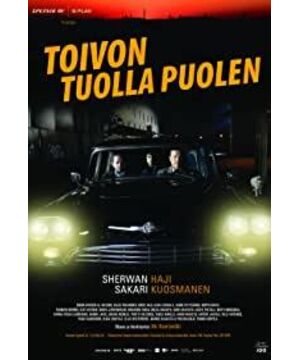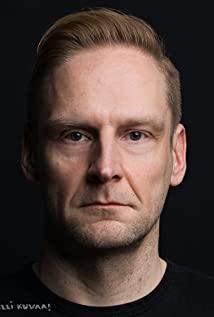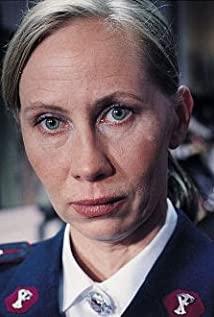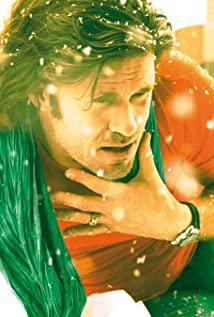Audiences who love the Finnish director must first be fans of "Aki Aesthetics": film-based light and shade and color, minimalist scenery, unsmiling characters, dialogue with stage effects, and beautiful rock music . These elements are easily found in "The Other Side of Hope", and they continue to increase. What is slightly new is the treatment of the story line. When the plot is not centered on one of the two male protagonists, Wikström (restaurant) and Khaled (Syrian refugee), the director cleverly asks him in the first hour of the film. Two irrelevant clues run side by side-at this time, the tone of the whole film is very soothing. After the audience's grasp of the plot and characters gradually became clear, the two lines began to converge, and at the same time, the rhythm of the film began to accelerate. With the tension brought by the two lines together, it finally came together and looked very comfortable.
This method of neatly telling stories is actually very classical, but Aki once again used practice to tell us that sometimes the form itself exudes infinite charm. When the setting, color tone, screen-to-screen switching, narrative composition, and soundtrack are all perfect enough, other elements such as character image and psychological portrayal, dialogue, and even the performance itself can all be retired. And come second. This is also in my eyes, "The Other Side of Hope" surpasses the most important point in the first three works of the Aji century ("Le Havre", "Twilight" and "Man without a Past"). As the most watched film before the start of this film festival, at least in terms of pure perception, I believe that everyone who goes to the scene will be the same as me and will not be disappointed. It is especially worth mentioning that the director’s use of the soundtrack in this movie, removing the beautiful and appropriate melody of the song, some of which even switch between the upper and lower scenes through the music itself (for example, after the music has been played for a while, the rock singer on the roadside From outside the painting into the painting), it is amazing.
Going back to the content, the director's perspective and analysis framework for social issues in this film are not really new (more on this later). This is the second consecutive work after Le Havre that focuses on immigrants, a (relatively new type of) social figure at the bottom of society. Some people also included it in the “Port Trilogy” together with Le Havre. series. The previous part was centered on the motif of "Haven" (a variant of the latter word in Le Havre), and this part is another word beginning with "H"-"Hope" (hope ).
Unlike the series of intense and fierce confrontations brought by "Haven" in "Le Havre", this "Hope" titled "The Other Side of Hope" has to be gentle many. What we see more is the "trench friendship" between Khaled and his brothers. Although Wikström, who sheltered him, dressed in the coat of a capitalist, he also helped Khaled with the "pragmatic spirit" of capitalism-a "world" in front of him. "Datong", but the director did not spend too much time on portraying to emphasize the indifference of the power machine and the "inhumanity" of the social ecology behind this "Datong". Compared with Kostinen in "Twilight" and M in "A Man Without Past", Khaled in this film at least looks happier, even if in fact he comes from a more difficult country, and he is in Helsinki. The encounters may also be more cruel. In terms of the strength of the story itself, I think this film is inferior to the above two films.
In my eyes, Aki's analytical perspective on social issues is based on a stable "triangular structure"-the perpetrator, the victim, and the mediator. In this film, Khaled is naturally the victim, the immigrant and welfare institutions that hold his right to stay are the perpetrators, and the restaurant owner Wikström is the mediator. Among the three types of roles, the conciliator is undoubtedly the most important, and it is also the most interesting place in the motif of Aki's movie. In "A Man Without a Past", the protagonist M is a "strong" "vulnerable group" who simultaneously shoulders the roles of sufferer and mediator. In "Twilight", the identity of the mediator is relatively lacking. Yes, only the female trader who has been silently caring for and loving Costinen can barely be called, but after all, love is not a powerful weapon for the reconciler; when it comes to "Le Havre", the reconciler suddenly becomes a whole street All the people on the Internet, with Marcel as the core, used their "mean force" to face the violence of those in power. Finally, in "The Other Side of Hope", the capitalist Wikström also became a new member of the "big family" of mediators.
The setting of the role of Wikström presents another possibility for our ideal “world unity”, which is neither entirely M-like heroism nor bottom-up and “self-defense” in Le Havre. The “style” of teamwork, but like in this film, in the final analysis needs to rely on the real organic integration between the bottom and the middle class (and even the power holders). Of course, whether this idea itself is more practical, you will have an answer by asking yourself whether you prefer the film or "Le Havre".
In fact, compared to the different identities of the mediators, what I personally want to see is what other possibilities are beyond this "triangular structure". Will there be a "fourth identity"? After the role of Khaled's sister appeared at the end of the film, I did have hope. She did not appear as a pure victim at the beginning. In the brief brother-sister dialogue, we learned that their thoughts are not unified. The elder brother has clearly recognized the status quo and the face of the perpetrator, but the younger sister still has illusions, perhaps due to personal beliefs, completely upholding different values from the elder brother and facing the "violence" attitude of the power machine. Of course, it is a pity that the film did not start there, and we have no way of talking about the meaning of the "fourth identity" outside of this "triangular structure".
The role of sister at least provides us with the possibility of reverie. After all, the society itself is fluid, diverse and heterogeneous. Under Aki’s wonderful artistic treatment, if there is a more three-dimensional collision between the characters, we will definitely be more enjoyable.
View more about The Other Side of Hope reviews










